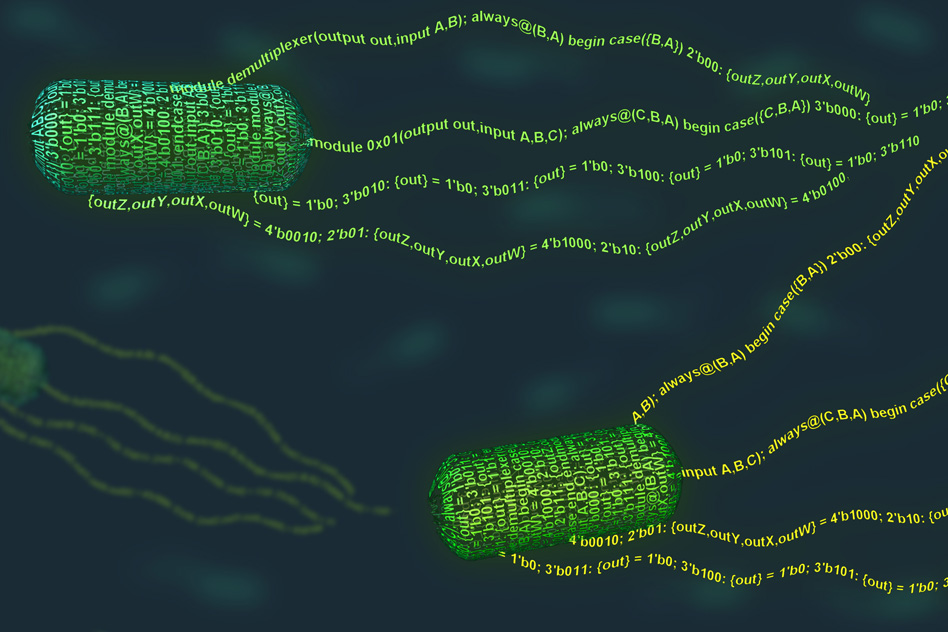A programming language for living cells

The American journal Science a published on April 1 (and no, it’s not an April Fool’s joke) the results of a research lead by the MIT’s Synthetic Biology Center and the Boston University Biological Design Center that anticipates a future in which the design of biological circuits will be similar to the design of integrated circuits in electronics. Researchers describe what is essentially a programming language to design computational circuits in living cells. The circuits generated on Escherichia coli plasmids could, for example, regulate cellular functions in response to multiple environmental signals. Such a strategy can facilitate the development of multiple complex circuits by genetic engineering.
The language used is based on Verilog, language commonly used to program computer chips. To create a version of the code that would work for cells, the researchers designed elements such as logical gates and sensors that can be coded in the DNA of a bacterial cell. The sensors can detect different compounds such as oxygen or glucose as well as light, temperature, acidity and other environmental conditions. The whole thing is customizable, users also being able to add their own sensors.
The research team plans to work on several applications by using this approach, especially on bacteria facilitating the digestion of lactose, or bacteria able to live on the roots of plants and produce an insecticide when they detect that the plant is being attacked.
Learn more about the study published in Science
